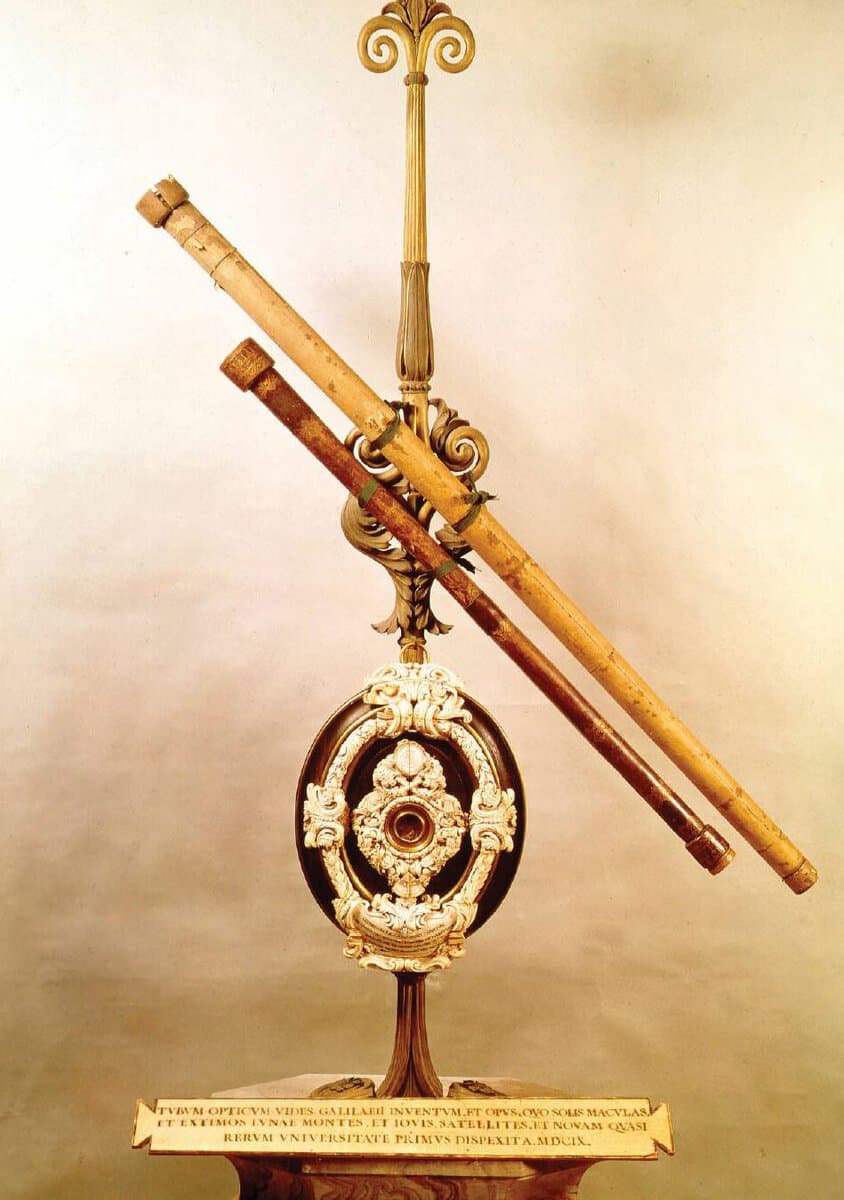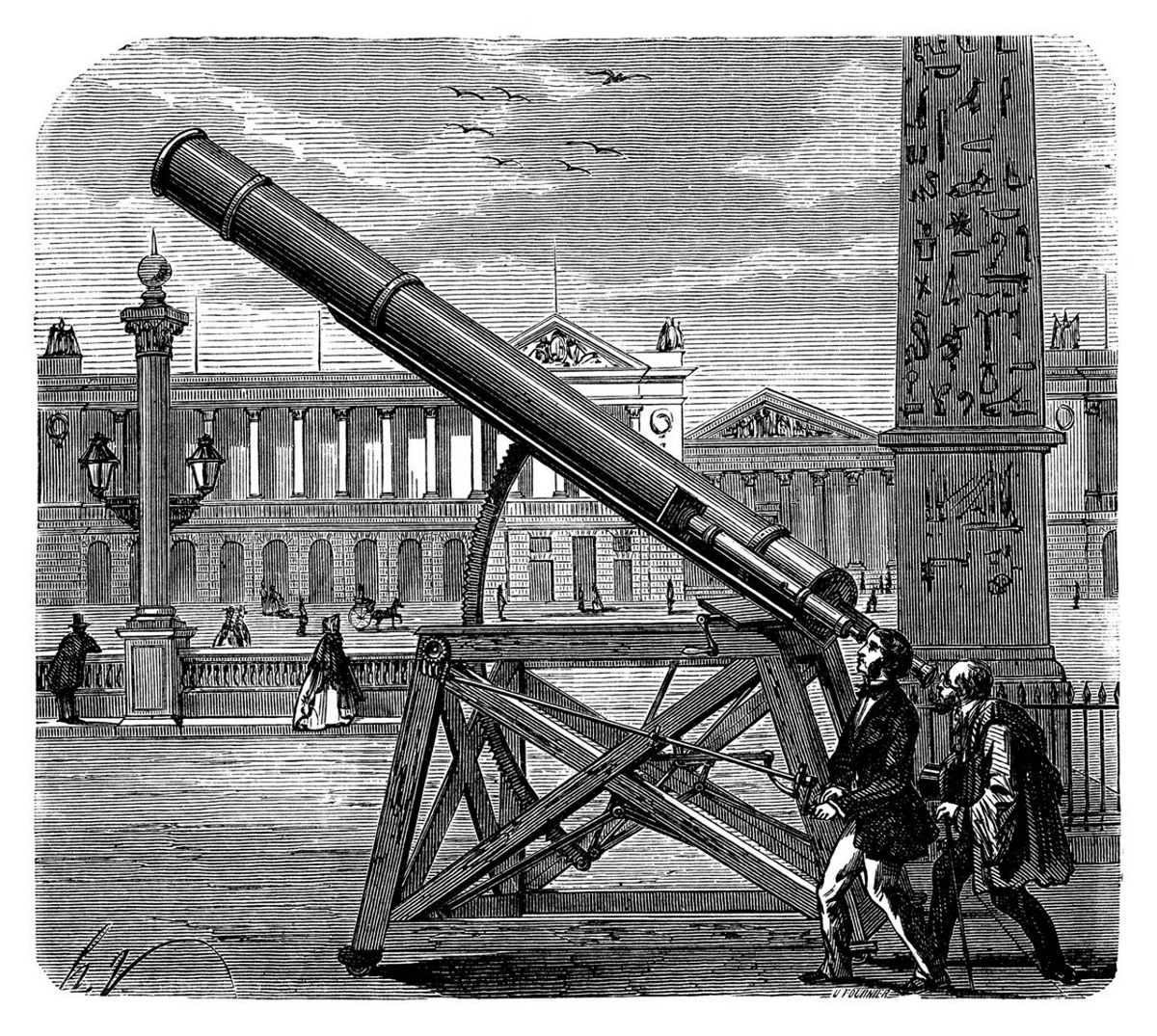
Recently, a replica of the reflector telescope created by Isaac Newton in 1668, called the TAL-35, has appeared on the market in Russia. The experts at the company “Shvabe” have accurately reproduced this groundbreaking invention in the field of astronomy.
The “Shvabe” telescope is virtually identical to the original, except for its improved image quality. It’s fascinating to note that the fundamental designs of telescopes were discovered in the 17th century and are still in use today. Our article explores the evolution of telescopes and the pioneers behind their construction.
Discovering the Beginnings of Astronomy
Over four centuries ago, in 1609, the renowned Italian scientist Galileo Galilei made a groundbreaking discovery that would forever change our understanding of the universe. Using a revolutionary device known as a telescope, Galileo was able to observe celestial bodies like never before. He marveled at the sight of craters on the moon, individual stars within the vast expanse of the Milky Way, and even the satellites of Jupiter. Eager to share his findings, Galileo chronicled his observations in a remarkable book called The Starry Messenger, which caused a sensation within the scientific community. This pivotal moment is widely regarded as a turning point in the development of astronomy as a respected scientific discipline.

Galileo Galilei showcases his revolutionary telescope in Venice. Fresco created by Giuseppe Bertini
The very first telescopes, from which Galileo Galilei drew inspiration to construct his own, were crafted in 1607 in the Netherlands. However, even earlier, in 1509, Leonardo da Vinci had already sketched simple designs for a lenticular telescope in his notebooks and suggested observing the Moon through it.
The mechanism of the initial telescopes was rather uncomplicated. Two lenses were positioned within the tube at a certain distance: the objective lens, a convex lens with a focal length of 10, 20, or 30 inches, and the eyepiece, a concave dispersing lens. The limitations of this device included a narrow field of view and a dim image.
In 1611, Johannes Kepler, a German scientist, introduced his own version of a telescope that utilized two collecting lenses. This design produced an inverted image, but it offered improved brightness and a wider field of view. Christoph Scheiner, a Jesuit scientist, constructed the first telescope based on Kepler’s design in 1613. Scheiner also pioneered the use of two perpendicular axes for aligning the telescope, one of which was perpendicular to the equator, allowing for compensation of the Earth’s rotation during observations.
Newton’s Reflector and other telescopes
Galileo initially constructed a telescope with a magnification of three times. Subsequently, he managed to achieve a magnification of 32x. Later on, researchers discovered that increasing the focal length enhanced the quality of the images and prevented distortions and aberrations. Consequently, telescopes grew to a colossal size of 100 meters.
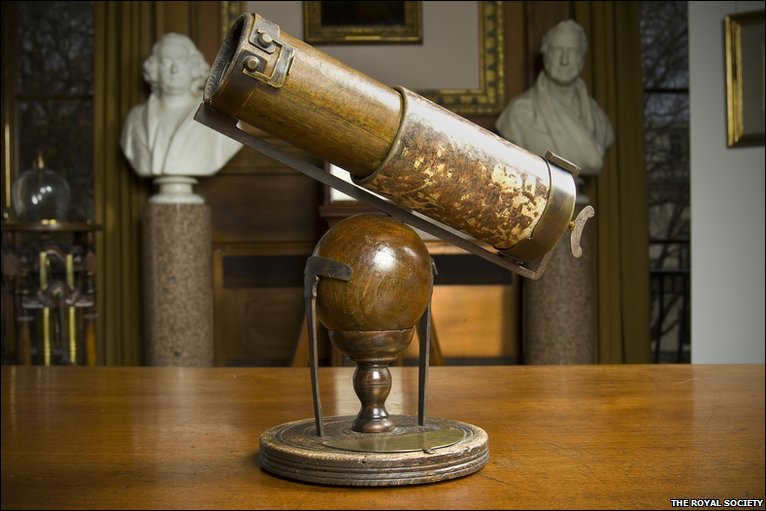
Original reflector telescope designed by Isaac Newton. Photo captured by the Royal Society of London
In 1672, Laurent Cassegrain, a French scientist, proposed a two-mirror design for telescopes. The first mirror was parabolic, and the second reflector was a convex hyperboloid, positioned in front of the focus of the first mirror. The first telescope using this design was constructed in 1732. By the end of the seventeenth century, all the fundamental telescope designs had already been developed, and they continued to be enhanced in the subsequent years.
The era of giants
In the mid-1800s, the world of astronomy witnessed a significant development with the emergence of the first telescope-assisted photographs. It was during this time that a groundbreaking event took place – William Huggins, an Englishman, became the first person to combine a spectroscope with a telescope. Huggins used this innovative approach to study the emission spectra of stars and successfully demonstrated the distinctions between galaxies and nebulae.
While refractor telescopes dominated the scene in the late 19th century, the 20th century saw a shift towards mirror reflectors, which ultimately became the preferred choice for astronomers. Today, the majority of telescopes still utilize mirror schemes for observation and exploration.
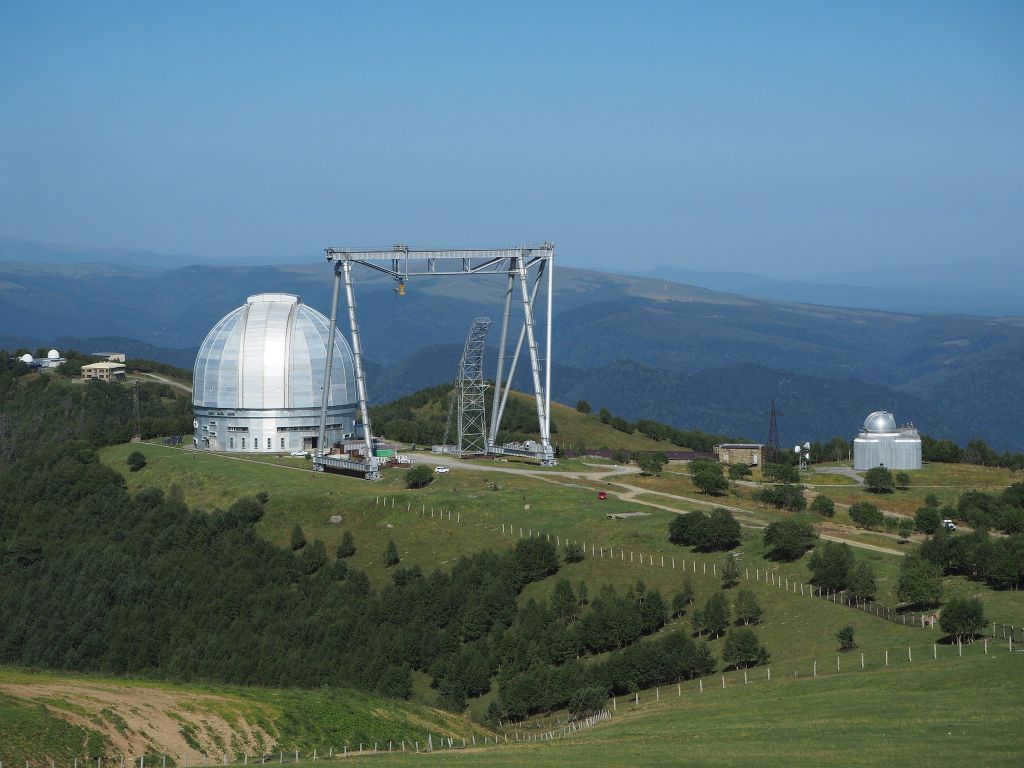
Astronomer Galileo Galilei invented the telescope in the year 1609. This revolutionary invention allowed him to observe celestial bodies and make groundbreaking discoveries. The telescope played a crucial role in advancing our understanding of the universe and has since become an essential tool for astronomers worldwide.
The construction of the Hooker mirror telescope in California in 1917, with a diameter of 100 inches (2.54 m), allowed Edwin Hubble to make groundbreaking discoveries. Following this, in 1948, the Hale telescope was launched, boasting a diameter of 5.15 meters. This telescope held the title of the largest in the world until 1976, when the BTA (Bolshoy telescope azimuthal) was unveiled in the USSR. The BTA was installed at the Special Astrophysical Observatory on Mount Semirodniki near Nizhny Arkhyz and became the first telescope with an alt-azimuth computerized mount. The construction of the BTA telescope was primarily carried out by the Lytkarinsky Optical Glass Plant and the S.I. Vavilov State Optical Institute, both of which are now part of the Shvabe Holding. It is worth noting that the BTA mirror, with a diameter of 605 cm, remains the largest in terms of mass to this day.
Shvabe’s Replica
Thanks to the scientists from the Siberian capital, today you have the opportunity to experience the same awe and wonder that astronomers of the distant past felt. In 2008, the Novosibirsk Instrument-Making Plant (NIP) of Shvabe Holding successfully recreated a telescope-reflector originally designed by Isaac Newton back in 1668. Initially, these replicas were produced as special souvenirs for the visitors of Novosibirsk who came to witness the total solar eclipse, also known as the Russian eclipse. However, the demand for these telescopes was so high that they continued to be produced on individual orders. Eventually, the decision was made to start mass production of these telescopes, which were then named TAL-35.
The design of the telescope was meticulously crafted, taking inspiration from historical records. The TAL-35 optical tube is divided into two sections: the movable part and the main part. The mount, which provides support for the telescope’s movement, is made of wood and shaped like a ball. In the Newton reflector, the mirror is positioned at a 45-degree angle to the optical axis, allowing for observations to be made from the side rather than the end of the telescope.
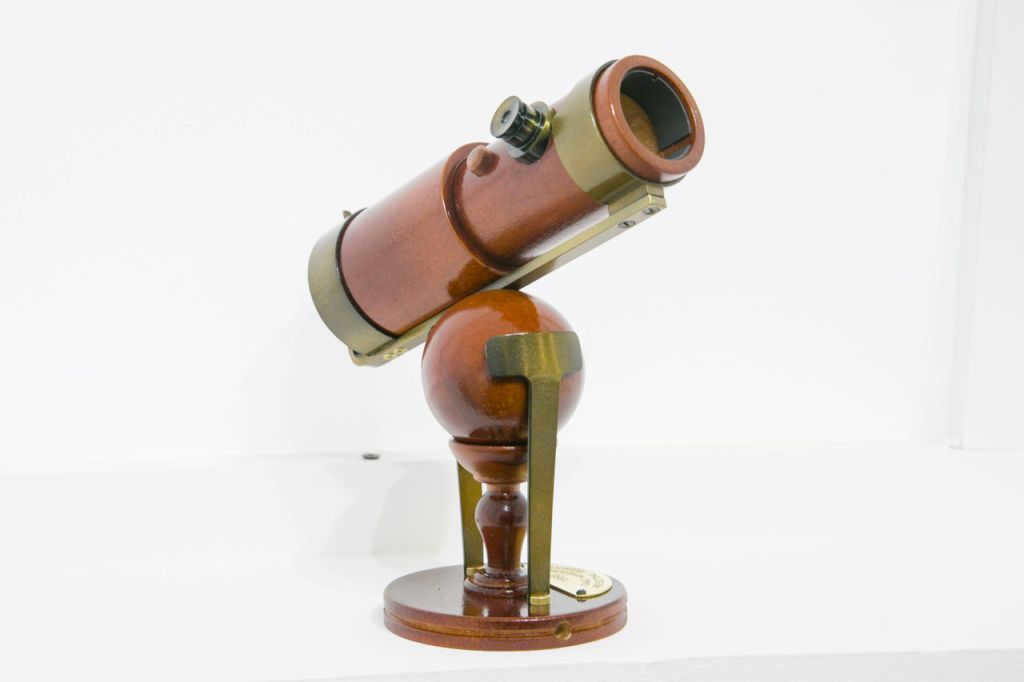
The Newton telescope’s components are produced using the same methods as the mass-produced TAL telescopes which have gained worldwide fame. The only distinction between the replica and the original historical model is the quality of the image it provides. While Newton utilized a polished bronze plate for reflection, the replica is equipped with an optical mirror made of processed aluminum. As a result, despite their souvenir nature, these telescopes can also be utilized for observing the stars and celestial objects.
The components of the Newton telescope are made in the same way as the TAL telescopes, which are well-known around the world. The only difference between the replica and the original is the quality of the image. Newton used a polished bronze plate for reflection, while the replica has an optical mirror made of processed aluminum. Therefore, even though these telescopes are souvenirs, they can also be used for observations.
Events associated with this
Ulan-Ude Aviation Plant: Celebrating 80 Years of Wings and Propellers
Degtyarev Plant: Over a Century Protecting the Fatherland
The Evolution of Telescopes: From Galileo to the Present Day
Alexander Nudelman: The Designer Who Equipped Pilots, Tankers, and Doctors
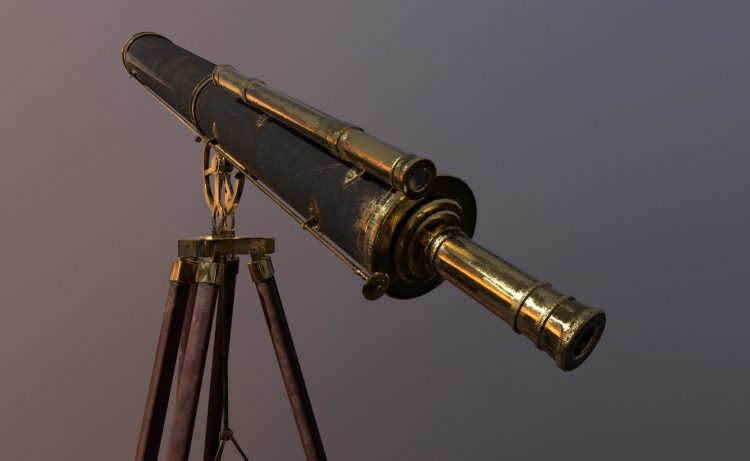
- History of astronomy
Telescope is a tool used to observe distant objects by collecting electromagnetic radiation, such as visible light. The word “telescope” comes from the Greek words meaning “far away looking”.
Telescopes are available for different ranges of the electromagnetic spectrum, including:
- optical telescopes,
- radio telescopes,
- X-ray telescopes,
- gamma-ray telescopes.
Neutrino detectors are sometimes referred to as neutrino telescopes. Telescopes can also be used as gravitational wave detectors.
In 385 BC, Democritus stated that the Milky Way consisted of numerous stars. Certain specialists contend that this deduction can only be arrived at through the use of telescopic observations. Conversely, some individuals refer to existing Greek and Roman manuscripts that depict an optical device resembling the modern-day telescope.
The initial efforts to create the telescope
The earliest depictions of a basic lenticular telescope were discovered in the works of Leonardo Da Vinci from 1509. His documentation remains: “Craft glass for observing the entire moon” (“The Atlantic Codex”).
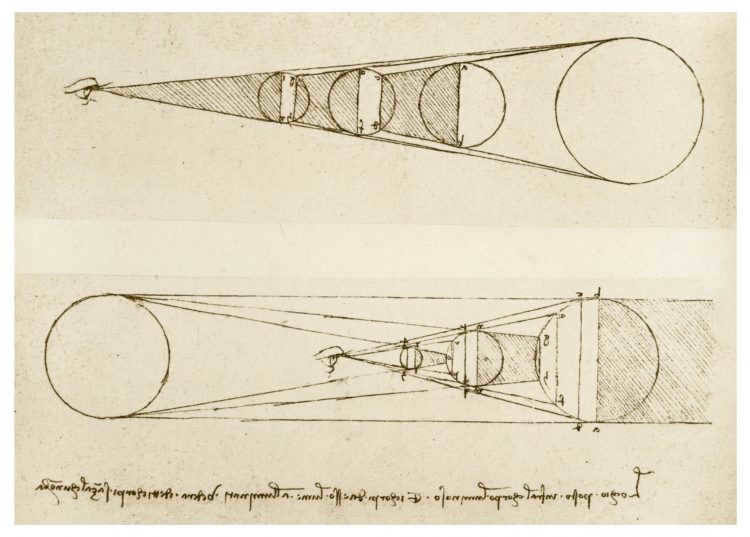
Illustrations depicting the telescope developed by Leonardo da Vinci.
Recently, credit for the invention of the first telescope has been given to Hans Lipperschule, a Dutch inventor. However, it is not widely known that long before him, astronomer Thomas Digges attempted to amplify stars using a combination of a convex lens and a concave mirror in 1450.
By the conclusion of 1609, Lipperschlei’s contribution led to the widespread adoption of compact telescope tubes in France and Italy. During August of that same year, Thomas Harriot made further advancements to the invention, enabling astronomers to observe the moon’s craters and mountains.
Galileo Galilei and his encounter with the telescope
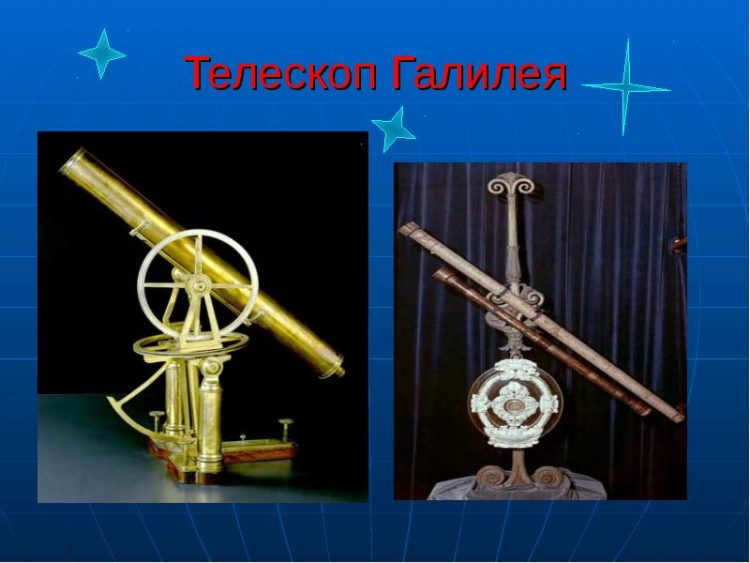
The significant breakthrough occurred when the Italian mathematician, Galileo Galilei, became aware of the Dutchman’s efforts to patent a lenticular tube. Inspired by this discovery, Galileo Galilei decided to construct a similar device for himself. In August 1609, Galileo Galilei successfully created the world’s very first complete telescope.
Initially, it functioned solely as a telescope – a combination of spectacle lenses that would now be referred to as a refractor. Prior to Galileo, it is likely that only a few individuals possessed the foresight to utilize this recreational tube for astronomical purposes.
Thanks to the instrument, Galileo himself made a number of groundbreaking discoveries, such as identifying mountains and craters on the moon, proving its sphericity, and even discovering the four satellites of Jupiter and the rings of Saturn.
Today, Galileo’s telescope may not appear impressive to modern individuals, as even a ten-year-old can easily construct a far superior device using modern lenses. However, during Galileo’s time, his telescope was a remarkable achievement, offering a 20x magnification but with a limited field of view and slightly blurred image. It was Galileo who ushered in the era of refractor telescopes in astronomy during the 17th century.
The Era of Stargazing in the 17th Century
The 17th century marked a significant period in the history of stargazing, with advancements in both time and scientific knowledge leading to the development of more powerful telescopes. Astronomers of the time began utilizing lenses with longer focal lengths, allowing for greater visibility and observation capabilities. However, these telescopes grew in size and became unwieldy, posing challenges for usability. To address this issue, tripods were subsequently invented to provide stability and support.
In 1641, a notable astronomer named Jan Hevelius constructed his first observatory. Hevelius recognized a major drawback of refractor telescopes at the time – chromatic aberration, which distorted the images. To overcome this obstacle, Hevelius pioneered the construction of massive telescopes, some reaching an impressive length of 45 meters.
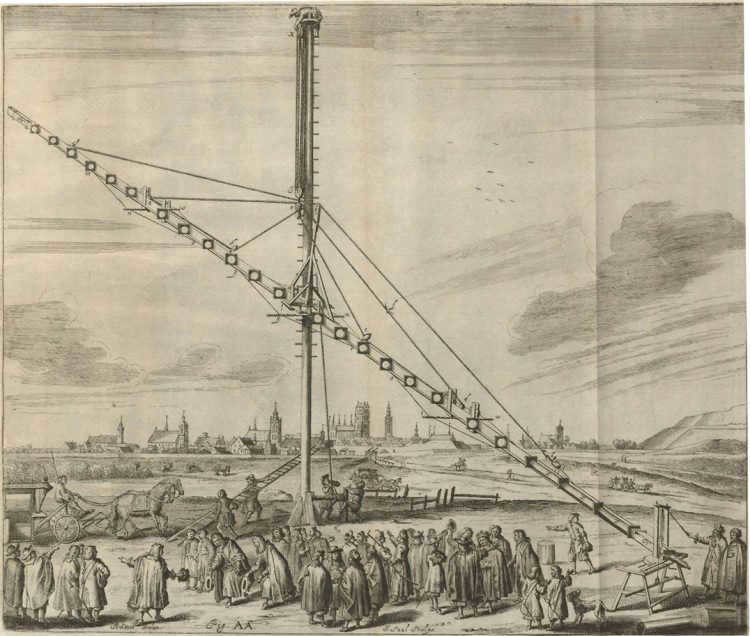
Galileo Galilei invented an innovative type of telescope known as an “aerial telescope.” Unlike traditional telescopes, it did not have a tube or a rigid connection between the lens and eyepiece. Instead, the telescope was suspended from a pole using ropes and blocks. Skilled teams of retired sailors, experienced in rigging maintenance, were employed to operate these telescopes.
Over time, these telescopes were gradually improved and refined. However, due to limitations in lens production, their maximum diameter remained small, typically just a few centimeters. It wasn’t until 1656 that Christian Huyens created a telescope with a magnification of 100 times and a size exceeding 7 meters, with an aperture of approximately 150 mm.
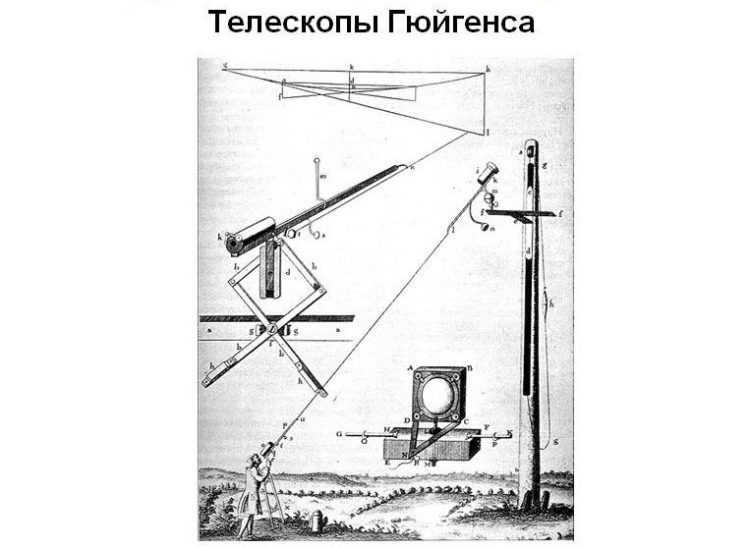
This telescope is already considered to be on par with modern beginner’s telescopes. By the 1670s, a 45-meter telescope had been built, which further increased magnification and provided a wider field of view.
Isaac Newton and the creation of the reflector
As time went on, telescopes began to increase in length. The pioneers, in their quest to maximize the device’s potential, relied on an optical law they had discovered: the longer the focal length, the less chromatic aberration occurs in a lens. The limitations of refractors led brilliant minds to seek solutions for improving telescopes. The answer came in the form of a new approach: the collection and focusing of light rays was achieved using a concave mirror. The refractor was transformed into a reflector, completely eliminating chromatic aberration.
The telescope’s two-mirror system was originally proposed by a Frenchman named Cassegrain. Unfortunately, Cassegrain was unable to fully realize his idea at the time due to the lack of technological advancements necessary to create the required mirrors. However, his designs have now been successfully implemented.
Interestingly, the Hubble Space Telescope operates on the same principle as Cassegrain’s telescope. Additionally, since 1974, the Special Astrophysical Observatory in Russia has been utilizing Newton’s principle of using a single concave mirror.
The full credit for this achievement goes to Isaac Newton, who revitalized telescopes by introducing the use of mirrors. In fact, he created his initial reflector with a mere diameter of four centimeters. Then, in 1704, he crafted the first mirror for a telescope measuring 30mm in diameter made from a combination of copper, tin, and arsenic. This breakthrough resulted in a significantly clearer image. Interestingly, Newton’s original telescope is still preserved in the Astronomical Museum in London.

However, opticians struggled for quite some time to produce complete mirrors for reflectors.
The year 1720 is often regarded as the birth year of a revolutionary type of telescope, when the first functional reflector with a 15-centimeter diameter was constructed by the British.
This was a significant breakthrough. There was a growing demand in Europe for portable, compact telescopes that were around two meters in length. The once-prominent 40-meter refractor tubes started to fade into obscurity.
At the conclusion of the 18th century, bulky reflectors were replaced by compact and convenient telescopes. Metal mirrors were also not a practical choice due to their expensive production costs and tendency to tarnish over time. However, in 1758, two new types of glass were invented: light crown and heavy flint. These glass variations made it possible to create two-lens lenses. One scientist, J. Dollond, took advantage of this breakthrough by creating a two-lens lens, which would later be known as the Dollond lens.
Advancements in Telescopes during the 18th and 19th centuries
Following the development of achromatic lenses, refractor telescopes emerged as the dominant choice, with efforts focused on improving these lenticular instruments. However, concave mirrors were eventually revived by amateur astronomers.
William Herschel, an English musician, made a groundbreaking discovery in 1781 when he identified the planet Uranus. This achievement, unmatched in the field of astronomy since ancient times, was made using a small homemade reflector.
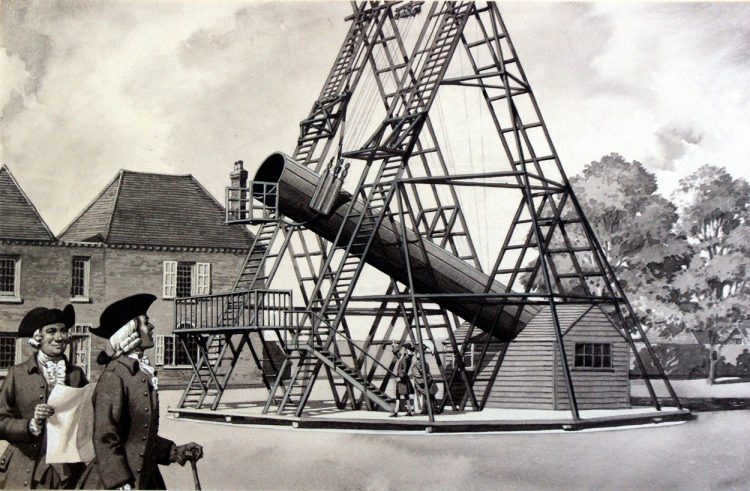
The success inspired Herschel to begin producing larger reflectors.
In his workshop, Herschel crafted mirrors by fusing copper and tin. The main focus of his career was a massive telescope featuring a 122 cm diameter mirror.
Using this telescope, Herschel made the groundbreaking discovery of Saturn’s sixth and seventh moons.
Another hobbyist astronomer, an English landowner named Lord Ross, devised a reflector with a mirror measuring 182 centimeters in diameter. Utilizing this telescope, he made significant findings including the identification of numerous previously unknown spiral nebulae.
The Herschel and Ross telescopes had numerous drawbacks. The metal lenses of the mirrors were excessively heavy, reflecting only a small percentage of the incoming light and eventually losing their effectiveness. A new and superior material was required for the mirrors, which turned out to be glass. In 1856, the French physicist Leon Foucault attempted to use a silvered glass mirror in a reflector, and the experiment proved successful. By the 1990s, an amateur astronomer from England had already constructed a reflector with a glass mirror measuring 152 centimeters in diameter, specifically designed for photographic observations. This marked another significant advancement in telescope construction.
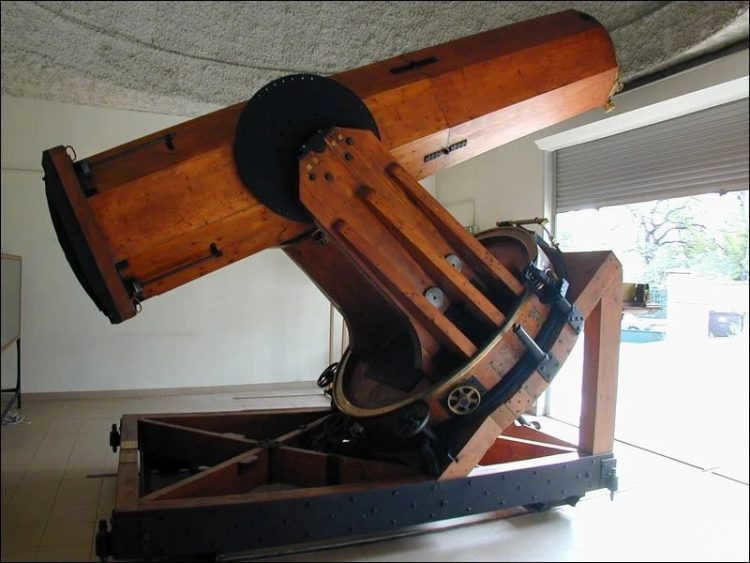
This discovery was not accomplished without the involvement of Russian scientists. Y.V. Bruce gained fame for his development of specialized metal mirrors for telescopes. Lomonosov and Herschel, each independently, devised a completely novel telescope design, in which the primary mirror is tilted without a secondary mirror, thereby reducing light loss.
The German optician Fraunhofer revolutionized the production and quality of lenses by implementing an assembly line. To this day, the Tartu Observatory houses a telescope with a fully operational Fraunhofer lens. However, the refractors produced by the German optician also had a flaw – chromatism.
In the late 19th century, an amateur astronomer named Crossley became interested in aluminum mirrors. He purchased a concave glass parabolic mirror measuring 91 cm in diameter and immediately incorporated it into his telescope.
Currently, modern observatories house telescopes with similarly large mirrors. While the growth of refractors slowed down, reflecting telescopes gained momentum. From 1908 to 1935, several observatories worldwide constructed over half a dozen reflectors. The largest telescope was installed in the Mount Vnlson observatory, boasting a diameter of 256 centimeters. However, even this record was soon surpassed. In California, an enormous American reflector was mounted, and it has been in use for over twenty years.
The recent evolution of telescopes
Telescopes have constantly expanded in size and enhanced their capabilities. Over 40 years ago, in 1976, researchers in the USSR constructed a 6-meter telescope known as the Bolshoi Telescope Azimuthal (BTA). For the remainder of the 20th century, the BTA held the distinction of being the largest telescope in the world.
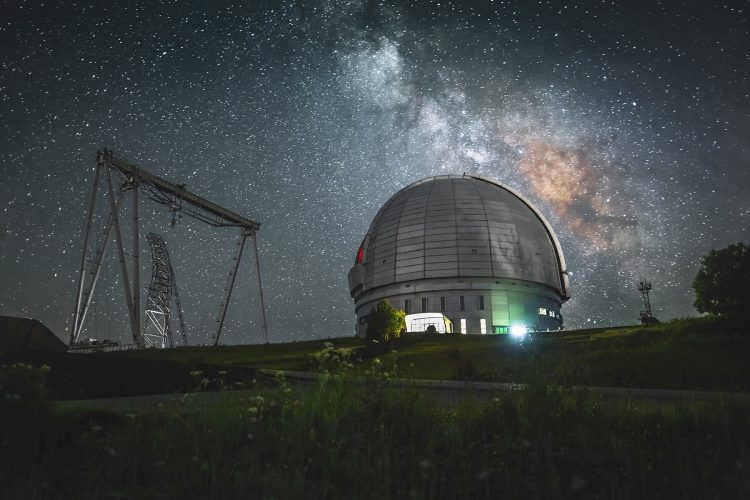
The Large Azimuthal Telescope is an innovative creation by its inventors, who were pioneers in developing groundbreaking technical solutions. One of their notable achievements was the implementation of a computer-guided alt-azimuth facility, a concept that has now become widely adopted in the design of giant telescopes. As we entered the 21st century, the BTA gradually slipped into the second tier of the world’s most prominent telescopes. Over time, the mirror’s quality has deteriorated by 30% of its original state, transforming it into a historical monument of scientific progress.
A new generation of telescopes has emerged, exemplified by the twin KECK I and KECK II telescopes. These optical infrared observation instruments, each measuring 10 meters in diameter, were installed in the United States in 1994 and 1996. Their construction was made possible through the generous support of the W. Keck Foundation, which contributed over $140,000 towards their realization.
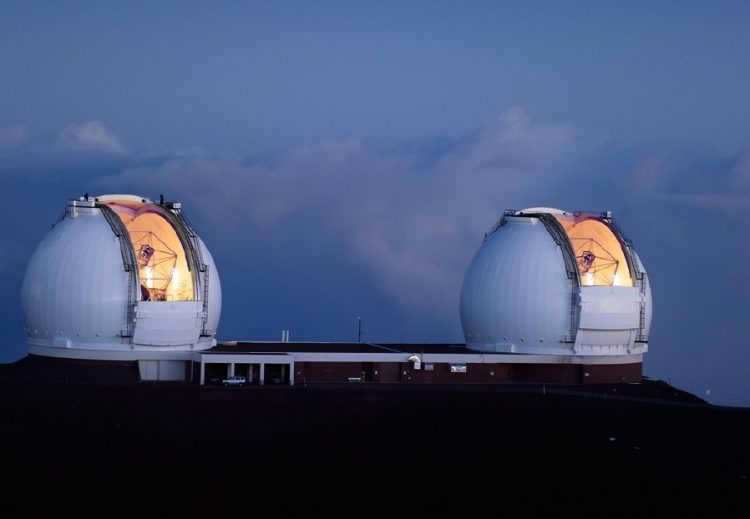
The KECK I and KECK II telescopes are a remarkable feat of engineering. These massive instruments are equivalent in size to an eight-story building and weigh over 300 tons each. Despite their enormous size, they are capable of working with incredible precision. The telescopes operate using a unique principle, utilizing a main mirror with a diameter of 10 meters. This mirror is composed of 36 hexagonal segments, which work together to function as a single reflecting mirror. The telescopes were strategically placed in Hawaii, on the slope of the extinct volcano Manua Kea, at an elevation of 4,200 meters. This location provides optimal conditions for astronomical observations. In 2002, the two telescopes, positioned 85 meters apart, began operating in interferometer mode. This configuration allows them to achieve the same angular resolution as an 85-meter telescope.
In 1999, the Hubble telescope, also known as the Hubble Telescope, was launched. This incredible instrument is the result of a collaboration between NASA and the European Space Agency, and it is considered one of NASA’s most important Large Observatories.
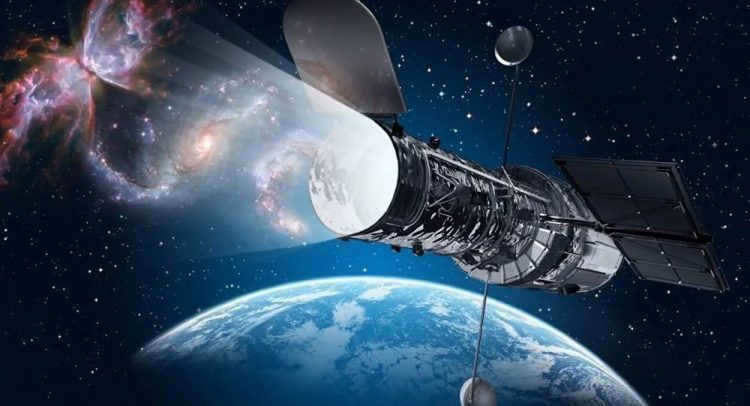
The Hubble Space Telescope
By placing the telescope in space, it allows for the capturing of electromagnetic radiation in wavelengths that are not visible through the Earth’s atmosphere, particularly in the infrared range. The absence of atmospheric interference results in the telescope’s ability to resolve images being 7-10 times greater than that of a similar telescope positioned on Earth.
Over the course of 15 years in Earth’s orbit, the Hubble has captured 1.022 million images of celestial objects such as stars, nebulae, galaxies, and planets.
In June 2019, NASA is planning to launch a unique infrared telescope called the “James Webb” (JWST) with a 6.5-meter mirror into orbit.
The evolution of the telescope has been quite remarkable, spanning from the skilled artisans of Italy to the cutting-edge satellite telescopes of today. In the present day, state-of-the-art observatories have embraced computerization. Despite this, amateur telescopes and renowned instruments like Hubble continue to rely on the innovative principles pioneered by Galileo.
Recent progress

In 2019, China completed the construction of the world’s largest telescope, boasting an impressive diameter of 500 meters. This remarkable feat took approximately 8 years to accomplish.
The price tag for this extraordinary radio telescope amounted to a staggering $180 million. It is worth noting that the previous record holder for the largest telescope was a radio telescope located in Puerto Rico, which was built over half a century ago and had a diameter of just over 300 meters. The Chinese invention represents a significant leap forward in the field of space exploration and has the potential to greatly expedite the discovery of various phenomena in outer space.
Scientists have also highlighted the fact that this colossal radio telescope will have the capability to detect distant exoplanets solely through their radio emissions. Furthermore, experts have emphasized that the Chinese radio telescope has the capacity to detect thousands of pulsars, further advancing our understanding of these celestial bodies.
Moreover, the Chinese observatory will be equipped to record radio bursts emanating from unknown sources, showcasing the telescope’s remarkable sensitivity in picking up even the faintest signals.
Clip
If you have a curious mind and aspire to become an amateur astronomer, it’s only natural to have an interest in the origins of the telescope and the fascinating history behind this remarkable instrument. It’s worth noting that the invention of the telescope is credited to a multitude of craftsmen and scientists, both renowned and lesser-known.
Although there have been many different claims, the true identity of the inventor of the original telescope remains a mystery. According to historical records, it is believed that the earliest forms of this revolutionary instrument (commonly referred to as primitive telescopes) emerged during the 16th century.
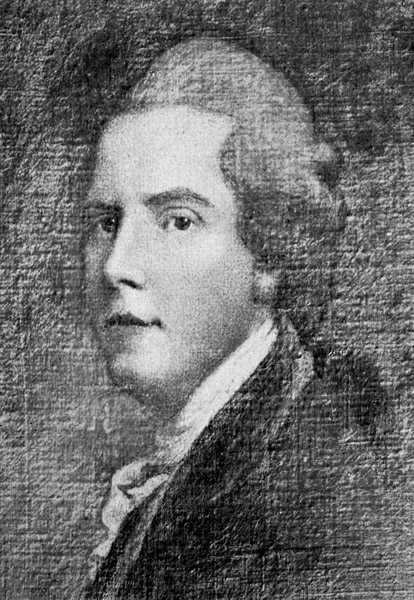
Figure 1. English astronomer Thomas Digges.
When was the telescope invented? It is a well-known fact that the English astronomer Thomas Digges made the first attempts to observe the celestial heavens as early as 1450. He experimented with the use of both lenses and mirrors, but unfortunately, his efforts were unsuccessful.
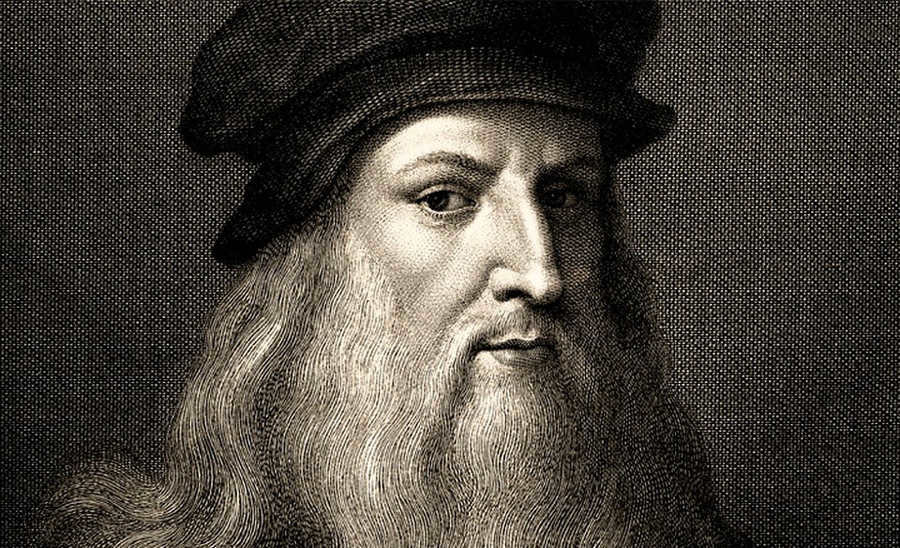
Figure 2. The renowned Italian artist, Leonardo da Vinci.
Shortly thereafter, Leonardo da Vinci, the highly acclaimed Italian artist, created the initial designs for a lenticular telescope. This groundbreaking work can be traced back to the year 1509. Subsequent developments in this field became even more captivating. It is widely known that during the early 17th century, two exceptionally skilled craftsmen resided in the Netherlands, specializing in the fabrication of optical lenses. These craftsmen were named Zachariah Jansen and Johannes Lippersgei. Jansen’s reputation as an innovator became so renowned that the local duke, in awe of his telescopic inventions, commissioned a sizable quantity of these devices for military and naval use.
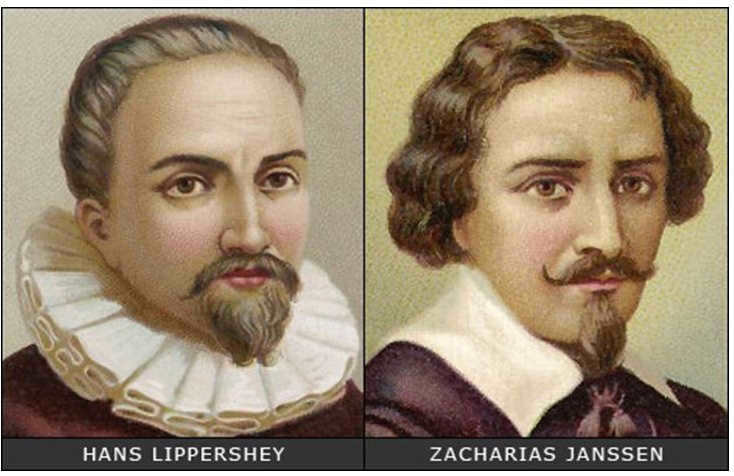
Figure 3. Dutch craftsmen of German origin Zachariah Jansen and Johannes Lippersgei
According to the accounts, Jansen and Lippersgei were constantly competing with each other, making it difficult to accurately assess who was the superior craftsman. Regardless, it was Lippersguy who attempted to patent the invention of the first telescope, although his design was not perfected and therefore his proposal was rejected.
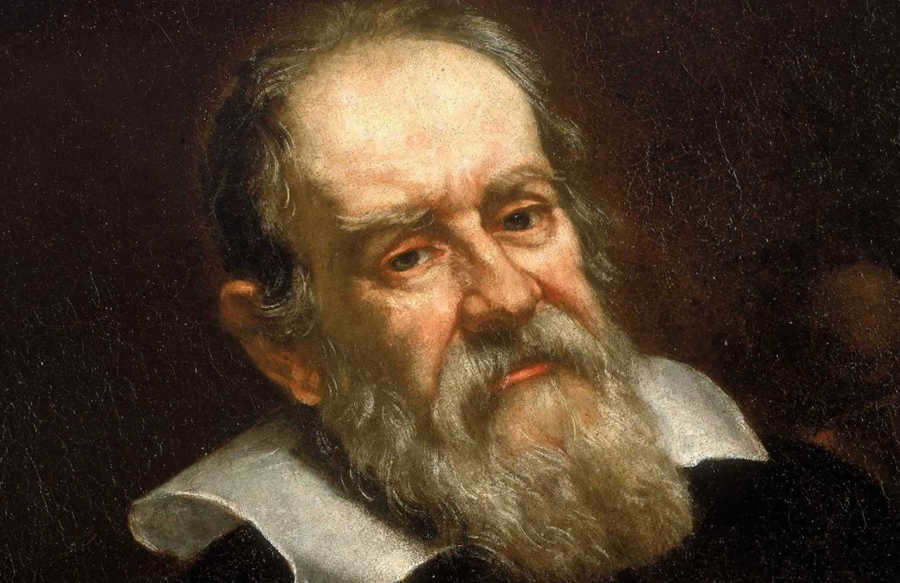
Figure 4. Galileo Galilei, the Italian physicist, astronomer, and mathematician.
Being a brilliant mathematician, Galileo Galilei was able to apply the existing laws of optics in practice. He achieved what the Dutch scientists before him could not – improving the telescope to enable accurate observations of celestial objects. Although Galileo’s initial telescope had its limitations, with low magnification and blurry images, it was a significant advancement in science during that period.
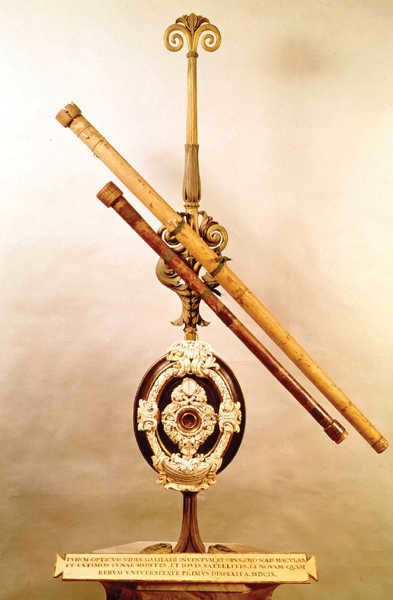

Figure 5. The initial telescope created by Galileo
The telescope invented by Galileo in 1609 was a device comprised of multiple lenses enclosed in a lead tube. Galileo is commonly recognized as the first individual to utilize a telescope for astronomical study. Galileo was astonished and thrilled to observe mountains and craters on the Moon, as well as a significant quantity of stars in the Pleiades constellation, which had previously been unknown to astronomers.
Galileo had the privilege of being the first person to observe the “moons of Jupiter” (its satellites). Upon examining Venus, the scientist discovered that it closely resembled Earth and was not a star as previously believed.
It is worth noting that Galileo did not actually utilize the term “telescope” in his lexicon. Instead, he referred to a telescope as an “eyepiece”. The designation “telescope” was initially assigned to the device by Demesiani, an Italian astronomer and mathematician who was a contemporary of Galileo. In Greek, the term “telescope” translates to “looking into the distance”.
Advancements in Telescope Technology: From Kepler to Newton
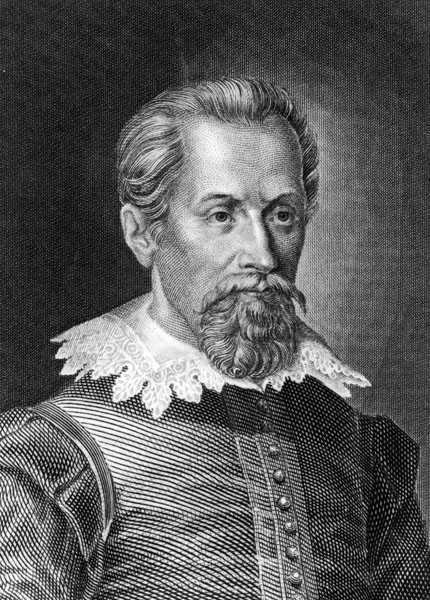
Figure 6. Johannes Kepler, a mathematician and astronomer
The development of the lenticular refractor telescope can be traced back to 1610, when Johannes Kepler, a German astronomer, first utilized double-convex lenses for both the objective and eyepiece of the instrument. This fundamental principle continues to serve as the basis for modern refractors, which rely on the refraction of light rays. Over time, advancements were made, resulting in the creation of more powerful tubes capable of magnifying objects up to 100 times. Meanwhile, the focal length of the telescope remained at 40 meters. In 1664, an astronomer named Oz achieved a remarkable feat by constructing a telescope with a tube length of 98 meters.
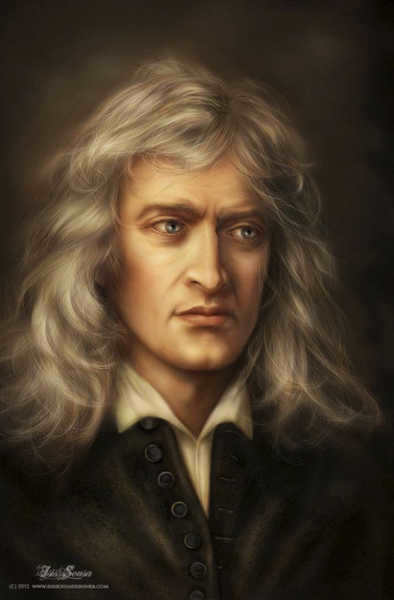
Figure 7. The renowned English mathematician, physicist, and astronomer Isaac Newton
Isaac Newton, the ingenious mind behind the invention of the first mirror instruments, successfully tackled the issue of heavy and unwieldy telescopes. These innovative devices were built upon the use of concave metal mirrors, which relied on the principle of reflection. It is from this fundamental concept that the term “reflector” emerged to refer to these types of telescopes.
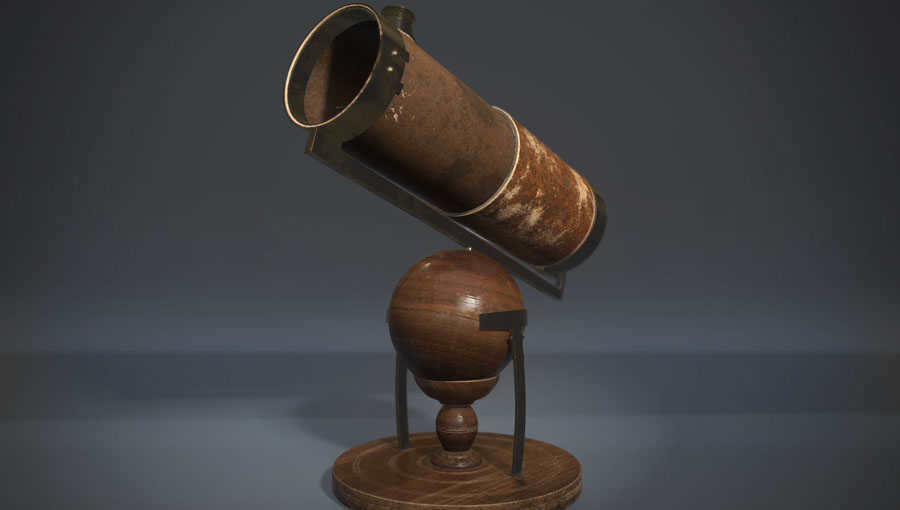

Figure 8 showcases the initial reflector telescope invented by Isaac Newton.
In 1672, Newton created the first reflector, and his design continues to be utilized by telescope manufacturers in modern times.
The renowned Russian scientist M.V. Lomonosov made improvements to Newton’s reflectors, while William Herschel constructed an exceptional reflecting instrument that was regarded as one of the finest during the 19th century.
The Importance of Amateur Astronomy in Our Lives
While it may seem that the advent of space telescopes, like Hubble or Kepler, has rendered small amateur telescopes irrelevant, this is far from the truth. Amateur astronomy has played a pivotal role in inspiring individuals to explore and study the stars throughout history, leading to numerous groundbreaking discoveries that continue to impact humanity today.
Magnifying instruments have been crucial for a variety of purposes, from aiding sailors in spotting enemy ships or reaching their desired destination, to assisting military personnel in observing distant enemy positions and devising effective battle strategies. Similarly, astronomers rely on telescopes to enhance their vision of the stars and planets. These instruments first emerged in the early 17th century and have been instrumental in expanding our knowledge of the cosmos.
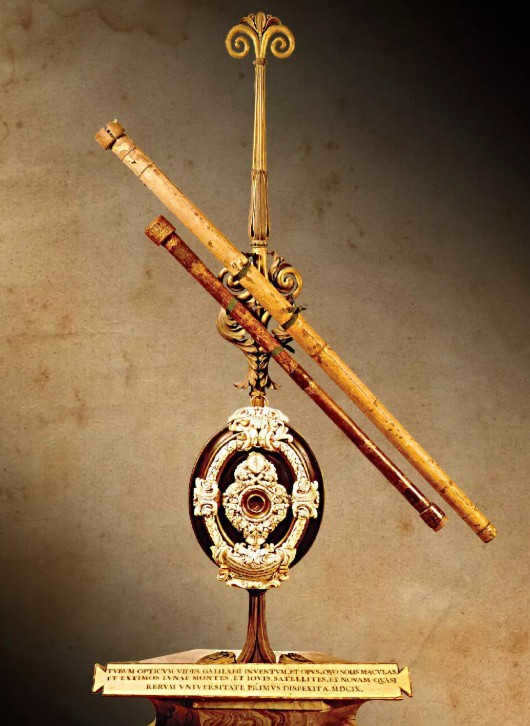
The emergence of the telescope
Leonardo da Vinci’s notes from 1509 contain the earliest known depiction of a telescope. In 1604, the German astronomer I. Kepler provided a scientific explanation for the way rays of light travel through a similar optical system consisting of two lenses. Just four years later in Holland, a country renowned for its glassblowing industry and skilled eyeglass makers, visual tubes made of two lenses began to appear. These tubes were the result of the work of three Dutch craftsmen: I. Lippersgei, Z. Jansen, and J. Mecius. While experimenting with the lenses, they discovered that when convex and concave (scattering) lenses were positioned at a specific distance from each other, they could create a clear magnification of distant objects. Lippersgee was the first to publicly demonstrate his invention in 1608, marking the official birth of the telescope.
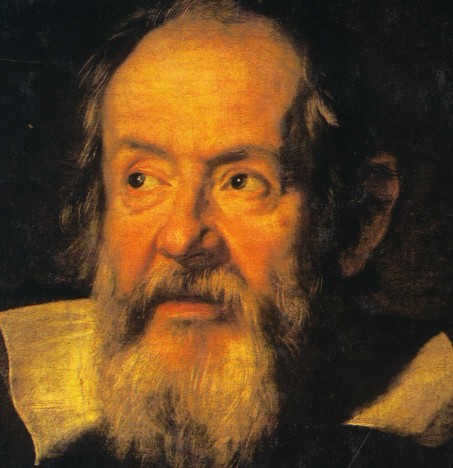
A trumpet aimed at the heavens
In 1609, Galileo Galilei, an Italian astronomer, mathematician, physicist, and philosopher, crafted a telescope with a threefold magnification and directed it towards the celestial realm to observe the stars. Galileo invented a telescope specifically for astronomical observations that increased the image’s magnification by eight times. His most powerful telescope, which magnified the image by 32 times, allowed Galileo to witness the intricate features of the Moon’s surface, discover four moons orbiting Jupiter, observe sunspots, and witness the Milky Way transform from a hazy blur to a conglomerate of individual stars.
In Russia, telescopes were known as “podzorny” which means “magnifying sight”. Galileo named his invention “perspicillum” which translates to “I see clearly”. The term “telescope” (derived from the Greek words tele – far and skopeo – I look) was proposed in 1611 by the Greek mathematician G. Demiziani.
Viewing Angle
When it comes to distant objects or objects that are close but too small, our ability to see them is poor or non-existent due to the fact that the viewing angle is too narrow. The viewing angle refers to the angle at which light rays from an object are refracted by the lens of the eye. These rays then pass through the lens of our eye and are projected onto the retina, where they are further processed by the brain to create a correct representation of the world.
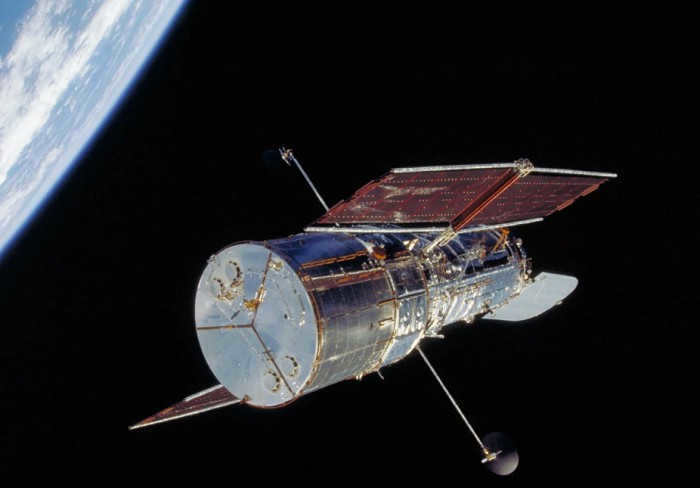
The Hubble Space Telescope is one of the most advanced telescopes in existence, capable of detecting even the faintest glimmer of light from a staggering distance of 400,000 kilometers. With its incredible precision and sensitivity, this remarkable device has the ability to spot a single light bulb on the moon when observed from our planet.
The optical telescope’s lens system alters the path of the light rays, providing a wider perspective of the object. The image projected onto the retina is enlarged, allowing us to observe intricate details of the object’s composition. When a telescope is described as magnifying by a factor of 10, it signifies that it presents objects with an angle of view tenfold larger than what the unaided eye perceives.
Galileo’s telescope consists of a tube that has lenses inserted on both ends. The lens that faces the eye is known as the eyepiece, while the lens that faces the object is called the objective lens. The objective lens serves as a collecting lens, increasing the angle of view. On the other hand, the eyepiece acts as a scattering lens, converting the converging rays from the objective into parallel rays again, albeit over a smaller area. This scattering lens prevents the image from being inverted, allowing Galileo’s telescope to provide an accurate depiction of the world.
The telescope functions by collecting a wide parallel beam of light and transforming it into a narrower parallel beam. This process increases the “density” of the light flux, making it possible to observe the light of distant stars that would otherwise be indistinguishable to the naked eye.

Idea Development
The Galileo Galilei telescope, developed in the early 17th century, was a refracting telescope. This type of optical telescope operates by utilizing refraction, which involves the bending of light rays through a system of lenses. In 1611, Johannes Kepler proposed a modification to Galileo’s design by replacing the scattering lens in the eyepiece with a collecting lens. This alteration transformed the divergent beam of rays, focusing them with the lens (F), into a parallel beam. While this modification expanded the telescope’s field of view, allowing astronomers to observe a larger portion of the sky, it did result in an inverted image. As a result, astronomers using Kepler refracting telescopes became accustomed to observing a world that appeared “upside-down.”
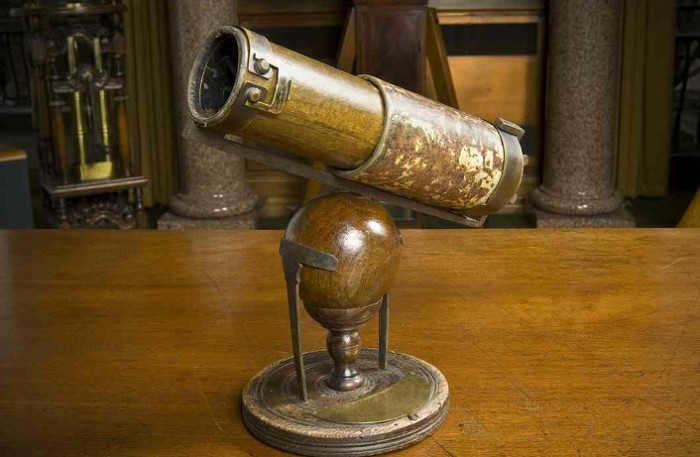
By refracting light rays of different colors in different ways, refractors create distortions of color known as chromatic aberration. In the year 1668, Sir Isaac Newton invented a new kind of telescope called the reflector, which uses a system of mirrors to gather and focus light, eliminating chromatic aberration.
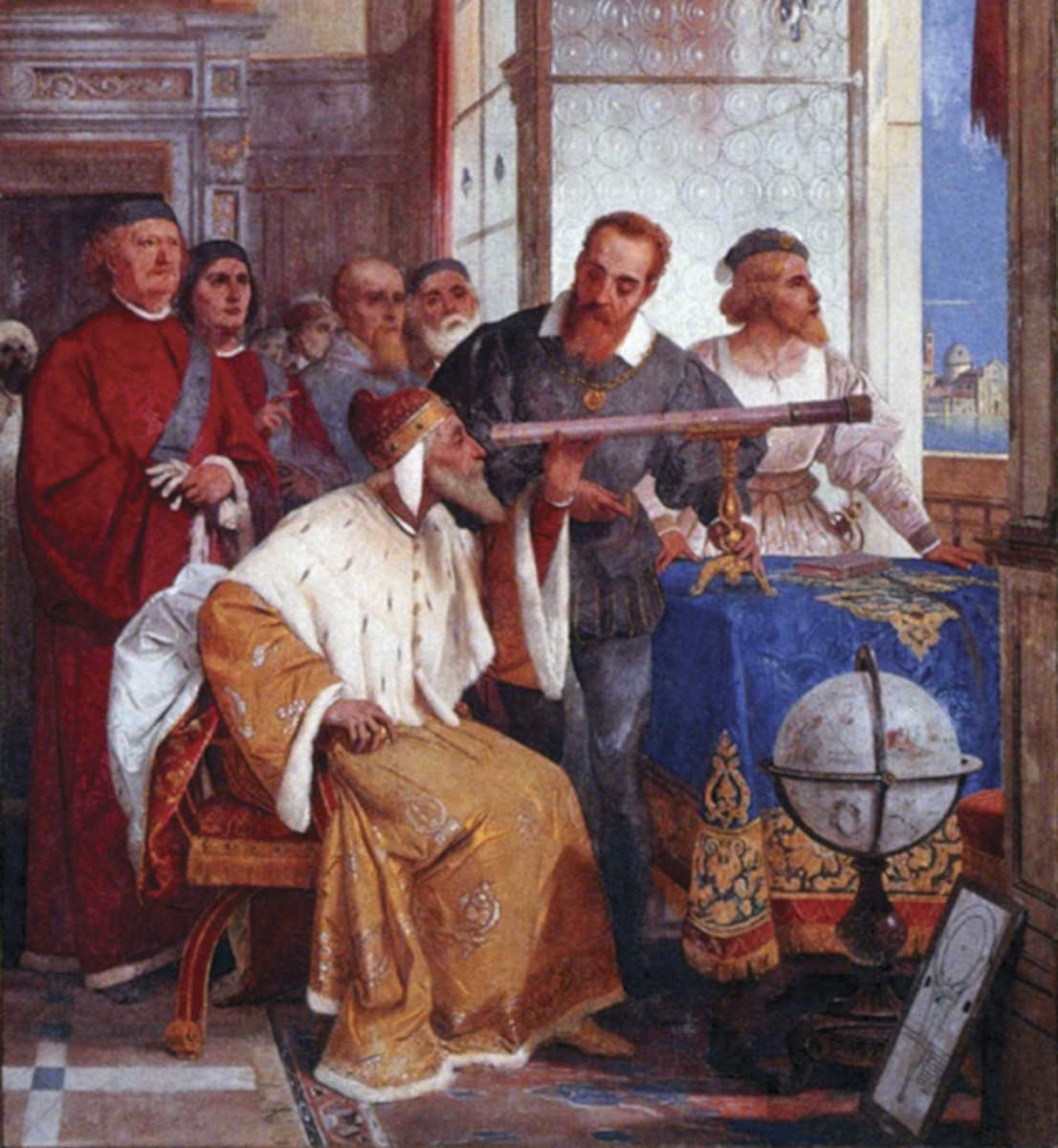
The telescope’s origins lie in the Netherlands
During the early 17th century, the Netherlands was home to the finest glass grinding workshops in the world. These workshops primarily produced lenses for eyeglasses. It is no coincidence that it was in this country where a skilled grinder decided to experiment by placing two lenses in succession. The outcome was nothing short of extraordinary: far-off objects suddenly appeared remarkably close, revealing intricate details.
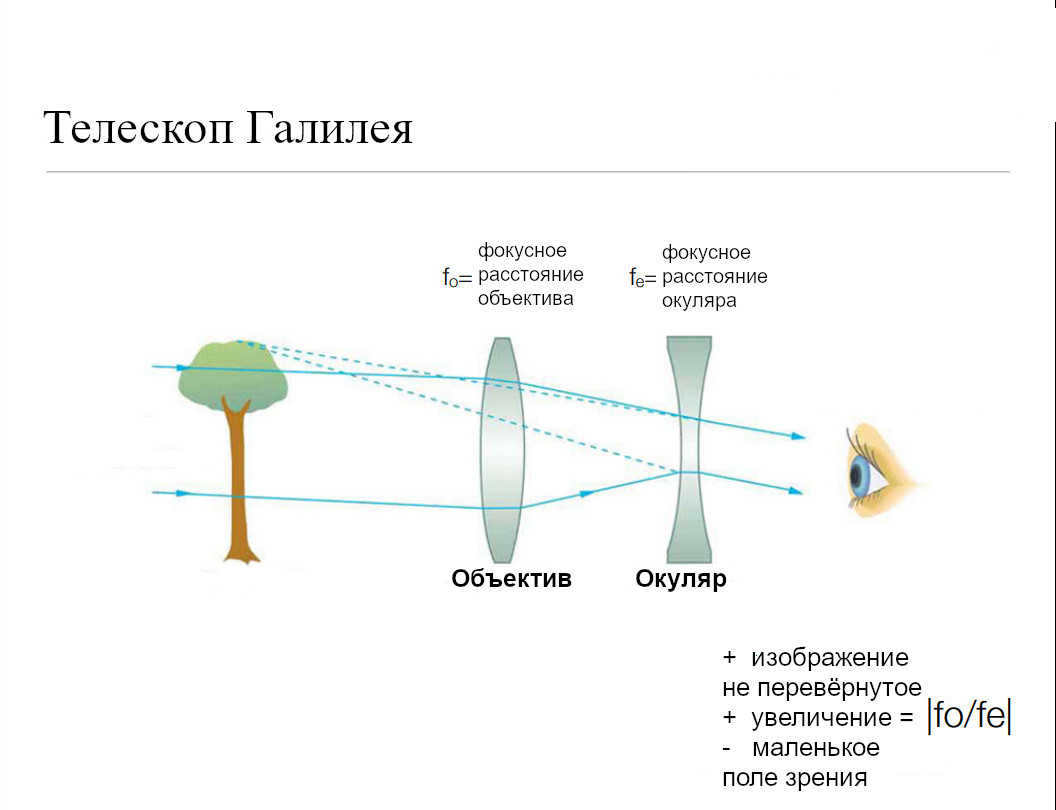
Galileo’s telescope
The Galileo Galilei telescope, named after the renowned Italian scientist Galileo Galilei (1564-1642), gained popularity among European military leaders who found it to be a valuable tool. This invention quickly spread among those who needed it the most, including the French king Henry IV, who used one of these telescopes. Thus, it became known as the Galileo Galilei telescope, a testament to the significant contribution made by Galileo to the field of astronomy.
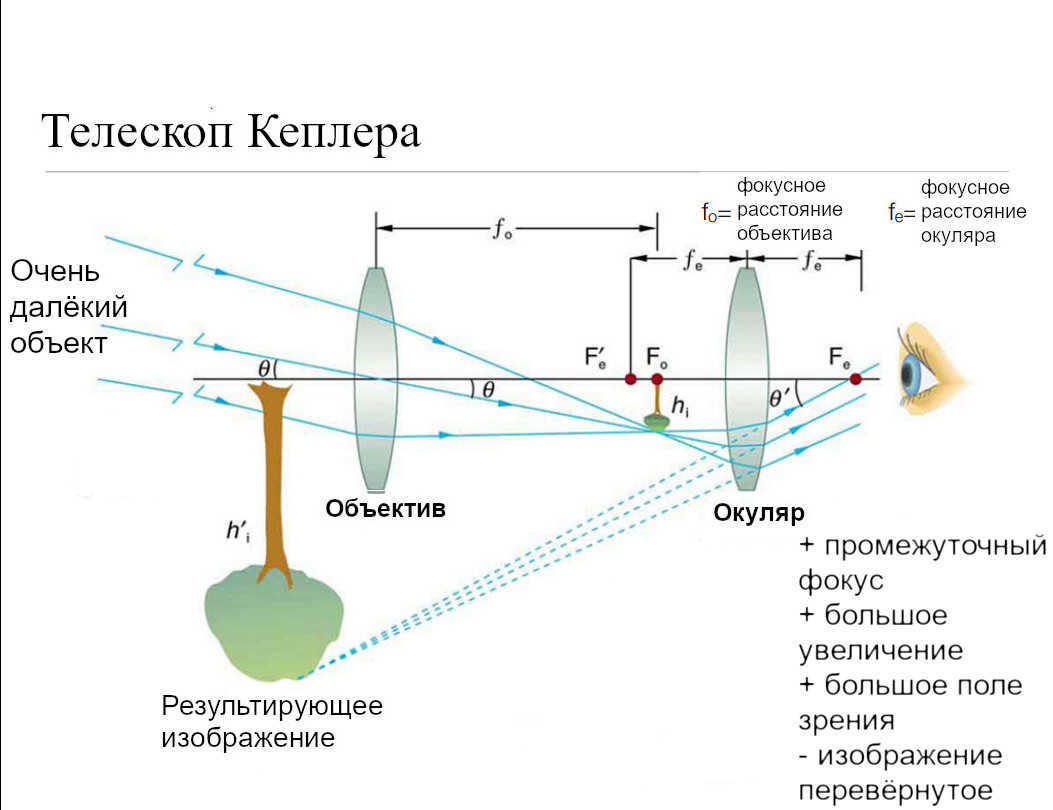
The presentation of the telescope to the Doge and Senate of Venice occurred on August 21, 1609, at the highest point in Venice, the Bell Tower of St. Mark, which was also precisely aligned with the four cardinal directions. Galileo’s demonstration in Venice was just as remarkable as Lippershey’s presentation in The Hague. The Doge and senators witnessed the neighboring towns, located 35 to 40 miles away from Venice, appear closer through the telescope. They could even observe individuals leaving the church and boarding gondolas on the nearby island of Murano. In the Adriatic Sea, galleys could be spotted through the telescope, even when they were still two hours away from Venice. It was a truly magical experience, and one that was highly anticipated. The wealthy city of Venice generously rewarded Galileo for his invention, appointing him as a professor at the University of Padua and granting him a lifelong pension of 1,000 florins per year.
However, Galileo was an innovative scientist who dared to do something that no one else had ever thought of doing. He directed his telescope towards the heavens and through its lens, he witnessed the breathtaking sight of the Moon’s approaching surface adorned with its craters, the mesmerizing sunspots, the satellites of Mars and Jupiter, and even the enigmatic “ears” of Saturn. The discovery of Saturn’s ring was particularly groundbreaking as it had never been seen before, although the magnification of Galileo’s telescope was not sufficient to fully comprehend its true nature. Nevertheless, this revolutionary act of pointing a telescope towards the sky led to a multitude of significant astronomical revelations.
By the way, the profound observations of the celestial realm facilitated by the aid of the newly invented instrument, the telescope, ultimately convinced Galileo of the validity of Copernicus’ geocentric system. However, this heretical belief sparked controversy and brought about numerous problems for Galileo with the Holy Inquisition, eventually culminating in his confinement to his own home until his passing in 1642.
Telescope of Kepler
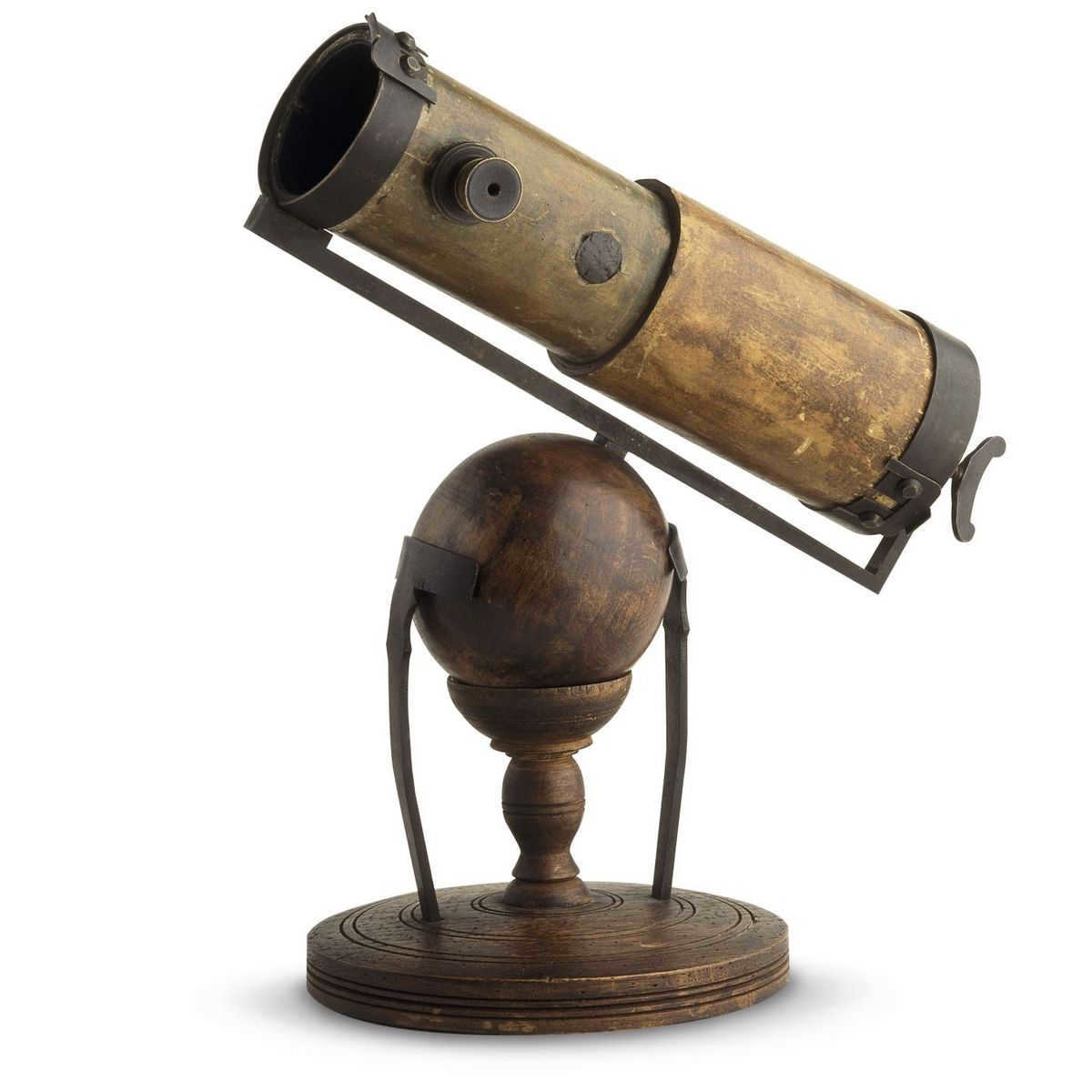
Following Galileo’s groundbreaking work, the telescope quickly gained recognition as a vital scientific tool. Astronomers from all over Europe began crafting their own telescopes, with Johannes Kepler (1571 – 1630) leading the way. In 1611, Kepler successfully constructed his very own telescope. Unlike previous designs, Kepler’s telescope utilized convex lenses for both the objective and eyepiece, resulting in significant magnification capabilities. The only drawback was that the image appeared inverted. However, when observing celestial objects, this minor inconvenience was of little consequence, wouldn’t you agree?
The renowned Dutch physicist and astronomer, Christiaan Huygens, constructed a groundbreaking telescope in 1655, which was considered the most advanced of its time. This remarkable instrument, measuring an impressive 12 feet (3.7 meters) in length, was specifically designed for the meticulous examination of the planets within our solar system. Huygens utilized this extraordinary telescope to conduct extensive observations of Saturn, ultimately unveiling its awe-inspiring ring system (following in the footsteps of Galileo!) and identifying a satellite, subsequently christened Titan.
Newton’s innovative telescope
An individual who possesses genius is capable of excelling in various fields. Prior to Newton’s groundbreaking invention, telescopes were constructed using lenses. Due to the fact that lenses refract rays of different colors at varying degrees, an undesirable colored rim would appear around objects when viewed through the telescope. This optical flaw is known as chromatic aberration. In contemporary telescopes, this issue is partially rectified through the use of specifically selected lenses. However, Isaac Newton believed that this problem was insurmountable. Consequently, in 1668, he constructed a telescope in which a mirror replaced the traditional lens. This unconventional solution presented new opportunities and revolutionized the field of astronomy!
Newton’s telescope did not have any of the drawbacks that earlier telescopes had. It did not have a lens-lens, so there was no distortion of the image and no color fringes (chromatic aberration). As a result, the image was crisper. However, the quality of mirror telescopes (which were known as reflectors) depended greatly on the quality of the mirror and its polishing. A few years later, I. Newton enhanced his telescope by installing a mirror that was more thoroughly polished. This telescope was small in size but provided a 40-fold magnification, which was unmatched by any telescope of that time.
In the hopes of receiving the highest recognition, Newton, like Lippershey and Galileo, presented his invention to King Charles II. Shortly after, Newton was accepted as a member of the Royal Society of London, the British equivalent of the Academy of Sciences.
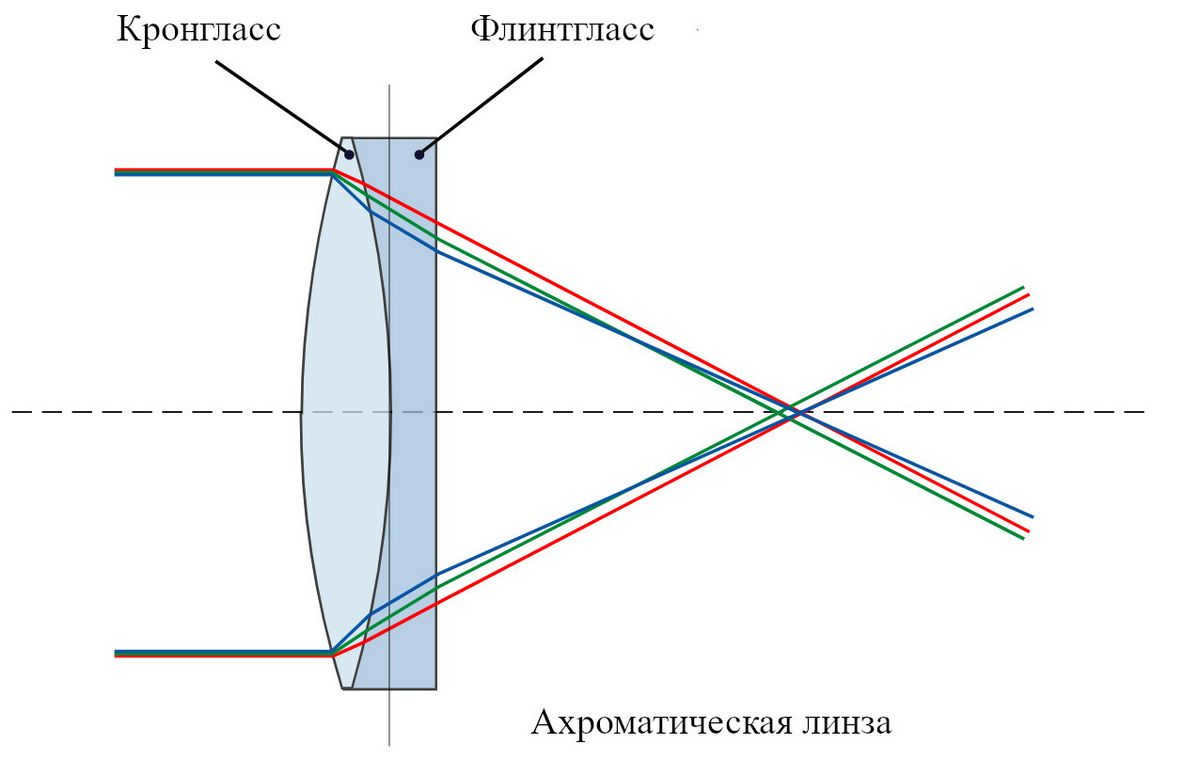
It should be noted that Newton was ultimately proven incorrect. In the 1730s, inventor Chester Moore Hall devised a method for eliminating the chromatic aberration caused by the telescope lens. He fused together two lenses made of different types of glass with distinct refractive indices. When combined, these lenses corrected one another, effectively eliminating the rainbow-colored spots around objects.
Since then, telescopes have been categorized into two main groups:
- Refractors, which employ a system of lenses known as an objective lens to gather light.

